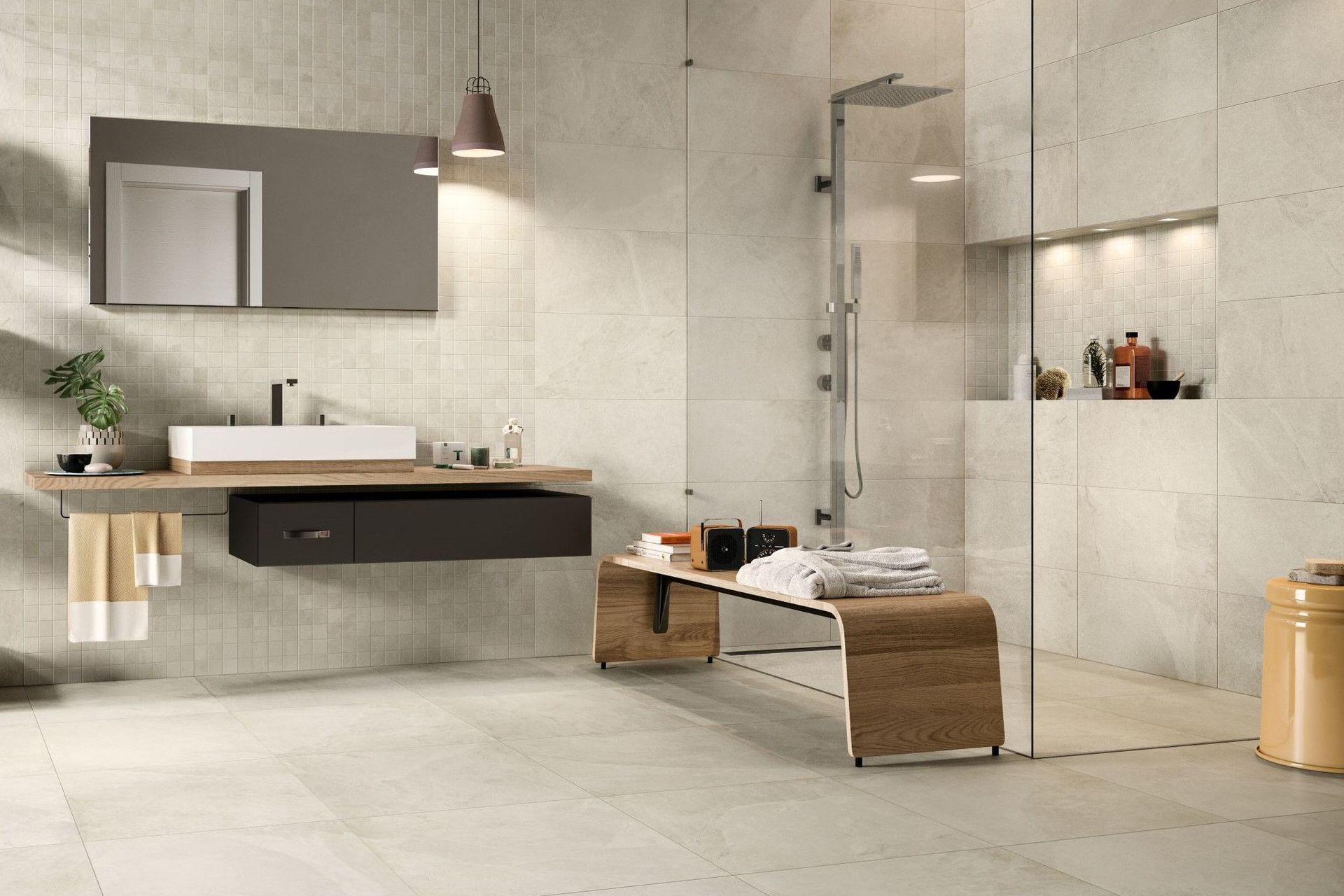Lifemark Tick for The Tile Depot
Written by
31 July 2020
•
4 min read

New Zealanders have had more than 70,000 falls in the shower and bathroom over the last four years. Yet nothing in the Building Code (NZBC) says residential internal flooring needs to be slip resistant.
Mike Syddall of The Tile Depot says sourcing slip-resistant bathroom tiles used to be confusing for both customers and staff. The NZBC only has a standard for external tiles, specifically on the main approach to a home. Bathrooms are not deemed a risk even though the popularity of completely tiled wet rooms has made this a common flooring finish in many Kiwi homes.
The only slip-resistant tiles previously available were for outdoor use where they could be hosed down and mopped.
“We became aware of Lifemark when we were working to develop a range of slip-resistant bathroom tiles that would also be easy to clean and maintain. We were trying to find that happy medium. Working with Lifemark gave us guidelines to work towards.”
Lifemark is a voluntary organisation that works alongside designers and builders to offer advice on how to make homes safer and more practical for people of all ages and stages. The Lifemark star rating system goes from 3 stars (baseline accessible) to 4 stars (age friendly) and 5 stars (accessible).
It shows how well a home encapsulates the principles of universal design. The concept is about providing accessibility, safety and comfort, particularly for those who may have a disability or less mobility.
Lifemark’s influence around New Zealand has gained momentum in recent years as more people become aware of the need for universal design, says Mike. Although there is no compulsion by law to incorporate universal design, it makes good sense to create living environments that suit the needs of a broader range of people for a lifetime.
“We get architects, specifiers and developers coming to us because they want to build to Lifemark specifications. By using our tiles, they acquire Lifemark points that make homes more liveable for anyone. Whether they’re renovating or building new, it becomes a good tool for resale value.”
We get architects, specifiers and developers coming to us because they want to build to Lifemark specifications...
Even if they don’t require accessibility now, Mike says people who build should think about who might live in the home when they sell.
Mike was pleased to come across Lifemark as they gave excellent support on the process of producing slip-resistant tiles.
“Normally when tile factories produce a new range, they slip test that initial production, but don’t retest each new batch. The problem is, each batch you create is always slightly different, which is why we bought our own slip testing machine from the UK. It’s a pendulum, like a swinging arm with a rubber sole that replicates the sole of a shoe. Now we test all our tiles in specific ranges; every batch that arrives, to make sure it keeps meeting the Lifemark safety threshold.”
Although The Tile Depot set out to test all their tiles, it proved quite an eye opener. Most standard floor tiles don’t meet the Lifemark threshold. They finally settled on around 40 tiles within 12 specific ranges in different colours.
Thanks to Lifemark, when customers come to The Tile Depot asking for slip-resistant tiles, staff can instantly point them in the right direction. These tiles display the Lifemark sticker, proof they’ve been tested to the highest standard of bathroom accessibility.
“Ultimately all flooring companies should be creating slip-resistant tiles. Tiles get a bad name for falls. We should all take responsibility for using the right tiles in the right place.”
Learn more about incorporating slip-resistant tiles in your bathroom.


